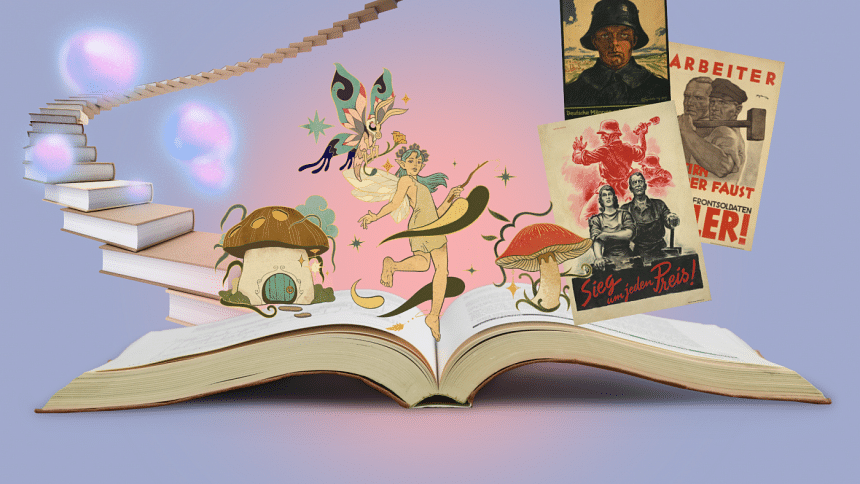History, fascism, and the hijacking of children’s fairy tales

Long before the television was created or books were made widely accessible, stories, like fairytales, were one of the prominent forms of entertainment available to the vast majority of people. Reality was harsh, and these stories allowed them to escape it and venture forth into distant worlds of romance and adventure.
Many children grew up without receiving any form of formal education, and to them, fairytales were not just a vehicle for the imagination but also an introduction to the dangers of the world and the accepted moral standards of the time. With the evolution of society from the feather quill to the laser printer, fairy tales too have changed to suit the times.
It was the 1930s, a time when xenophobia and nationalism ruled Germany. To fit the vision the Nazi party had for Germany and its youth, Joseph Goebbels, the Reichminister of Propaganda, had many such tales remodeled to fit the Nazi narrative. In these fairytales, the Little Red Riding Hood wears a coat adorned with swastikas, and Snow White's father is one of the German commanders leading the invasion of Poland. Snow White herself and Cinderella would be made to represent the ideals of Aryan beauty and racial purity, while the evil witch and cruel stepsisters would embody the anti-Semitic stereotypes associated with the Jewish race.
In the east, the military elite of Imperial Japan would incorporate local legends and folktales into propaganda to convince the citizenry of the "righteousness" of their expansionist endeavours. In The Tale of Momotaro, the demons of Onagashima were used to portray the British, Americans, Chinese, or Russians, while the heroic Momotaro represented the Japanese government. Momotaro's animal companions were meant to showcase the ideals of steadfast loyalty that future Japanese citizens were expected to live by.
In the Cold War era, the Soviet Union was also known for using modified versions of Russian folktales. These were not just for domestic consumption, as the Soviets translated and exported these all over the world. Such fairytales were markedly different from western ones. The focus was on the common peasant, the impoverished Ivan as he always triumphed over the evil, greedy Czar. While the stories themselves weren't overly political, the real objective was always to bring up a generation of global youth sympathetic to the Soviet cause.
Fairytales, no matter how innocuous, serve as an effective method of delivering ideology. There is no accident in this. Children and youth are highly impressionable, and the biases formed in those formative years can dictate the sort of life a person may lead in the future.
Such tactics may seem like relics of the 20th century, but one can never really know for sure. To differentiate between what is innocent and what is not often proves to be a tricky business indeed. Awareness, therefore, is of the utmost importance.
References:
1. Verve Magazine (July 2, 2014). THE FÜHRER'S FAIRYTALES
2. History Channel (September 17, 2013). The Dark Side of the Grimm Fairy Tales
3. Los Angeles Times (June 7, 2017). 'Momotaro,' a Japanese World War II-era propaganda animation film, finally gets a DVD release
4. Scroll.in (August 25, 2019). Those beautiful Soviet fairy-tale books many of us were enchanted by? They were meant for propaganda
Nayeem is an avid history nerd. Quiz him on medieval siege tactics at [email protected]

 For all latest news, follow The Daily Star's Google News channel.
For all latest news, follow The Daily Star's Google News channel. 








Comments